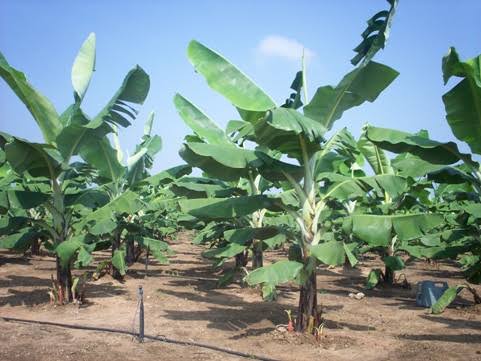
High prices, robust demand help banana-growers recover from lockdown-time losses

Banana farmers, especially those growing for exports, have made handsome gains from high banana prices and good West Asian demand, Kalyansing Baburao Patil, head of tissue culture and agronomy at Jain Irrigation Systems, a diversified agricultural conglomerate based in Jalgaon (Maharashtra), and a leading producer and marketer of tissue-cultured plants of high-yielding banana varieties, told The Federal in a video interview.
Bananas are trading at Rs 14-15 a kg in Jalgaon, the banana-producing hub, and those for exports even touched a peak of Rs 30 a kg in Solapur during the year. This is higher than the pre-pandemic price of Rs 10-12 per kg. Though prices of inputs like fertilisers have risen considerably, farmers are making a profit of about Rs 3.5 lakh an acre.
Some farmers earning in lakhs
Some farmers, who have large acreages under banana, are earning in tens of lakhs or even a couple of crores, Patil said, citing examples from Jalgaon in Maharashtra, Barwani in Madhya Pradesh and Maharajganj in Uttar Pradesh. This is quite a change from enforced losses banana farmers endured during the lockdown in 2020.
Indian exports rose by 61 per cent to 3.41 lakh tonnes in 2021-22, even as bananas traded globally dropped to about 20 million tonnes due to disease outbreaks and cyclone damage in the main exporting countries. Though India’s average annual production is about 33 million tonnes — a quarter of the world’s output of 118 million tonnes — it ranks low on exports. India’s average export quantity is 0.24 million tonnes, about the same as Vietnam (0.28 million tonnes) and Cambodia (0.29 million tonnes). This compares poorly with Ecuador’s export of 6.84 million tonnes and 3.53 million tonnes of the Philippines.
Farmers’ savings: Rs 3 lakh per acre
Patil said there was good demand for Indian bananas and it could even supply them to the European Union and Russia, which are currently supplied by Latin American countries and the Philippines because the time taken, 20-25 days, is about the same. India’s main export markets are Iran, the United Arab Emirates, Saudi Arabia, Iraq, and Oman — in that order.
Also read: With government policies, farmers’ debts shoot up while incomes wilt
The yields of banana farmers who practised the scientific methods of planting tissue-cultured clones of high-yielding Grand Nain bananas and installed drip-irrigation equipment for keeping the gardens moist and supplying plant nutrients as required were as high as 35-40 tonnes per acre. Given the cost of cultivation of about Rs 1.2 lakh per acre and an average price of Rs 12 per kg, a farmer could save Rs 3 lakh per acre.
‘Drip irrigation is central to high banana production’
The Grand Nain variety scores over Indian varieties as it is high-yielding, the fruit are straight and of the length (at least 7 inches) and girth (37-47 mm) preferred in export markets. It delivers the first harvest in about 10 months and the next (from secondary shoots or suckers) in 18 months. Jain Irrigation had Imported the clones of the Honduran variety from Israel in the early 1990s to drive the sales of its drip irrigation equipment (which it manufactures), but its clones are superior to Israeli ones, Singh claimed. This year, the company sold about 100 million cloned saplings, a company official said.
Drip irrigation is central to high banana production, Patil said. Bananas are generally not advised to be grown in zones with annual rainfall below 2000 mm. But in the banana-producing hub of Jalgaon, the annual rainfall is round 700 mm. The plants also need high humidity. Jalgaon’s weather is dry. Drip irrigation helps in keeping the root zone of the banana plants moist and aerated throughout. With additional drip irrigation lines and water dripping from shade net fencing around the gardens, the desired microclimate is created, Patil said.
Also read: India’s banana variety hit by deadly mutant fungus strain, says NRCB study
Protocols for export production
Apart from scientific farming practices, pre- and post-harvesting protocols have to be observed for export production, Patil said. Though Grand Nain bunches have about 17-18 hands, only eight should be retained so that the fingers or fruits can grow to the required size. The florets have to be removed to keep off sucking pests like aphids and the bunches must be sprayed a couple of times with fungicides and insecticides. They must also be covered with plastic sheets to prevent bruising, age tagged for uniform ripening in ethylene chambers, and the pulp temperature brought down from the room temperate of 35 degrees C to 14 degrees C within six hours of harvesting.
Though Jalgaon, Solapur and Kolhapur (in Maharashtra) were banana cluster development zones, as per Apeda, the official export promotion agency, infrastructure like pre-cooling facilities and pack houses were lacking. The roads in Jalgaon were in a state of disrepair, so exporters were coping by improvising the transport equipment to prevent damage to fruit. Without coordinated and purposive action from growers, exporters and the government, the export opportunities available to India would be squandered.


